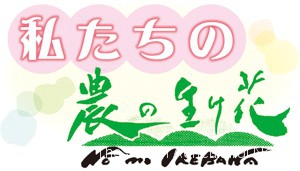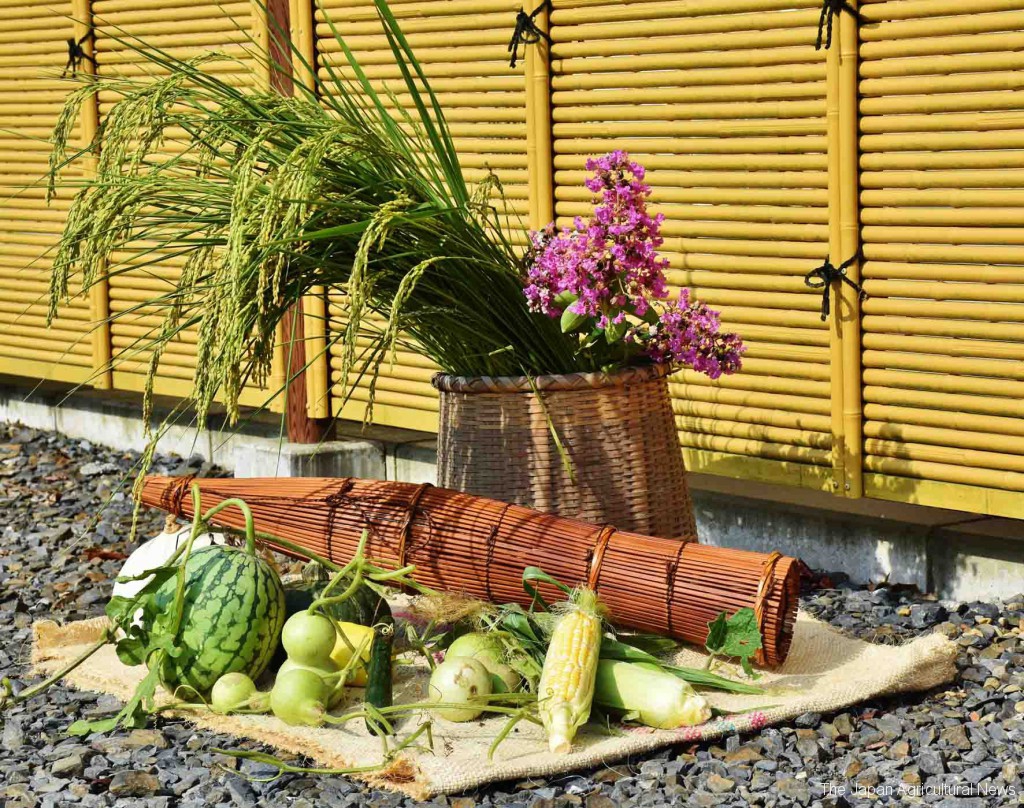 Tokiko Shimizu, 75, from Ibaraki city, Ibaraki Prefecture, talked about the fun of Noh no Ikebana.
Tokiko Shimizu, 75, from Ibaraki city, Ibaraki Prefecture, talked about the fun of Noh no Ikebana.
“Overgrown vegetables are often thrown away, but with Noh no Ikebana, they can be excellent materials. I sometimes remove the leaves or hold them upside down to think about how I can arrange them. I enjoy doing so very much.
I usually make my arrangement with seasonal agricultural products and flowers from my farmland and garden and put it in the entrance hall. As containers, I often chose thing like a wooden well bucket. They often catch the attention of my visitors and give us a fun topic to talk about. Some people said they were unique. Some others asked me the name of the flowers.
There are 16 people in the local Noh no Ikebana club. Sometimes, we participate in JA’s events and offer a No no Ikebana class for kids.
The main feature of this arrangement is rice stalks with maturing rice grains. I chose them to express how I’m excited to welcome the season for harvesting rice. The rice stalks are surrounded by several summer vegetables like watermelons to show the change of seasons. I put these vegetables vertically so that they look more three dimensional.
We used to catch dojo fish here in Ibaraki and this long bamboo basket called douke or uke in Japanese is a trap to catch dojo. It reminds me of the good old days and how we enjoyed lunch with friends and families sitting on a straw mat placed on a dike. Here I used a gunnysack instead of a straw mat.”
<Containers> a dojo trap, a vegetable basket, and a gunny sack
<Materials> rice stalks, crisp myrtles, watermelons, pumpkins, a cucumber, green peppers, corns, gourds, uri melons


